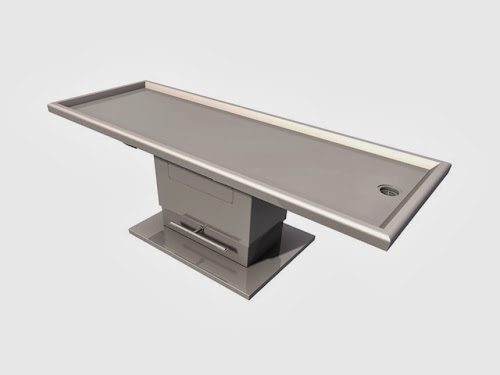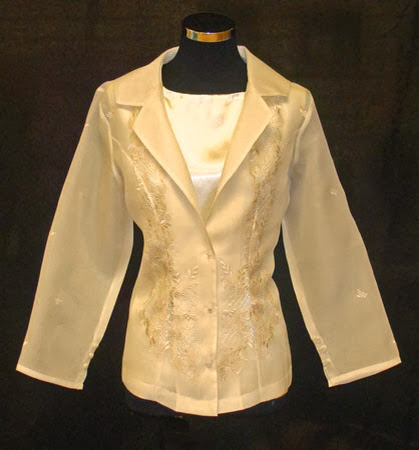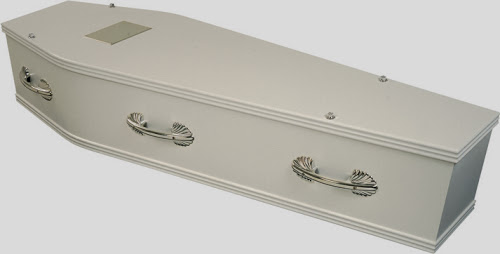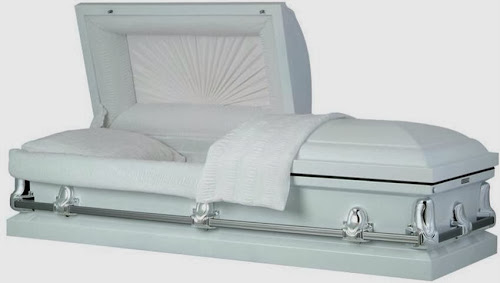|
|
Where's the F-U-N in Funerals?
Saturday, November 9, 2013
Novena Prayers
Violent Deaths
My brother was murdered and I spared all my family members the pain of seeing him before he was embalmed. Was I right?
Death Certificate
When my father was being embalmed, I insisted on watching the whole process even if I was very uncomfortable with it, just to make sure he doesn’t suddenly wake up in the middle of the whole thing. I love my dad and don’t want him to get hurt. Was I being silly?
I assure you your dad was not hurt in the process. No reputable embalmer is going to proceed without a death certificate. A death certificate is a document where a doctor stakes his medical reputation that the person indeed has died. The doctor states the primary and possibly secondary cause of death and affixes his or her signature on the document. Without this document, you could not have had your father embalmed.
It is possible to have someone embalmed without the actual death certificate on hand provided the funeral parlor has assurance from a certifiable doctor or a hospital that the person is indeed deceased.
Before the onset of modern medicine, it was fairly possible to bury someone only for them to wake up inside the grave later because doctors were not effective in certifiably determining one’s vital signs. Now, it is pretty standard and simplified.
So, in those days, a cord was attached to one of the dead person’s wrists. The other end of the cord was attached to a bell above the ground. Someone was assigned to wait above all night, and should the bell ring, they promptly dug up the grave. Thus came about the term, the “graveyard shift.”
The death certificate has several copies and is filed in the city government where the death took place and all the copies go to corresponding departments. The burial place will likewise need a copy. Without a death certificate, one can not get a burial permit or a cremation permit. This is to make sure that there is definite record of one’s death and one has not merely disappeared from the face of the earth. The death certificate is also a requirement for one’s burial so that it is possible to trace the location of one’s remains should your survivors prove to be unavailable.
As all the copies of the death certificate are submitted and filed, you don’t end up with any of the copies. However, you may need a copy or two in order to claim for insurance, office death benefits, banking, and the like. You can actually request beforehand, for the funeral parlor to secure a certified true copy or copies from the city hall.
The more reputable funeral parlors usually include the death certificate service in the package you avail of. Provided you have a doctor to sign the certificate, they will take care of filing the certificate in all the relevant city halls. You can do this yourself, but it is time-consuming, so why not let the experts handle it? In the institution I belonged to, there are two individuals whose only job is to file these certificates. So if the funeral is to be out of town, it is their job to file it in whatever town that is.
The certified true copy of the death certificate is merely a photocopy of the original document, but stamped and signed by the city clerk that it is indeed truly a copy of the original in their records. These copies are available by request for a few hundred pesos each.
The Box Stops Here: Casket Attire
What kind of clothes should I include for my grandmother to wear after she is embalmed?
Typically, either the most beautiful dress she owns or one of her favorite dressy outfits. Make sure you include all parts of the outfit like belts, jackets, shawls, scarfs, and appropriate accessories. When I say beautiful, I mean something that is still beautiful even when she’s wearing it. You wouldn’t want her to be wearing something beautiful but doesn’t look good on her anymore.
If she owns two, then bring both and choose later, preferably, something that will match but not clash with her casket. A scarf or veil may be useful just in case you have difficulty in styling her hair appropriately.
I didn’t know they had saved my grandmother’s 50th wedding anniversary gown. Its inlaid stones and beading had darkened which actually made it look older and more expensive. Dressed in it, she looked like a queen. A visiting aunt lamented, it was a shame to bury it with her.
And please, don’t forget to include undergarments. These are easily forgotten specially for the elderly. You don’t want to be unpleasantly surprised that her transparent garments may be revealing too much. Include a bra, an appropriated camisole, underwear and stockings, specially if you don’t want to expose her feet.
Typically in this country, shoes are hardly worn by the dead because of the superstition that they will suddenly stand up and go for a walk in the middle of the night. It is perfectly fine to include shoes inside the casket and even better not to include them at all.
Jewelry? Keep it simple and fancy, as in, simple costume jewelry and not the real thing. These include earrings, necklaces, rings, bracelets, brooches, pins and hairclips, but for the love of God and all things decent, please, not all at once! If you must use the real expensive jewelry, make sure you take them out before you bury her. You don’t want to tempt any grave robbers. Specially among your own relatives.
For the gentleman, if he is to wear a suit, make sure you include an undershirt, the dress shirt, the jacket, tie, pants, belt, cufflinks, underwear and socks. For the elderly, you may choose to buy new underwear and socks. If you will use a barong tagalog, make sure you include the undershirt, and should there be intravenous markings on his arms, maybe you should purchase long-sleeved undergarments.
I was told by my staff that they once handled a charity case for a destitute old man. Someone had donated an old wooden casket and the man looked fine and elegant in a donated barong as he lay in it. When they were carrying him to his burial place, the donated casket gave in and the bottom fell off, along with his entire body. And there, for everyone to see, in his finery, he was dressed in his beautiful barong tagalog – and nothing else!
Not the formal sort? That’s alright. Just as long as it looks clean. I’ve had a young man buried in his racing outfit or another in his golfing outfit, cap and all. Just as long as you keep it within the boundaries of good taste. You want the people to smile in agreement, not laugh inappropriately.
The Box Stops Here : A Coffin or A Casket?
Cremains at Home
I was at a friend’s house and shock of shocks, I saw that they kept the urn containing the cremated remains of their dad at their altar. We got into a rather lengthy debate with them about this. Who is right?
First of all, the technical term for cremated remains these days is “cremains” and interment of ashes is “inurnment.”
That aside, on to your question. I’ve seen many people do this. Strictly speaking, if one is Catholic, the teaching to this day is a proper burial of all the cremains of a person, all together, in an appropriate place of burial, which is a cemetery, a memorial park, an ossuary, crypt, or a church. They should not be scattered, whether on land or at sea. Obviously, one’s altar or mantelpiece is none of the above.
I’ve seen some people keep cremains on their altar but mostly either for only their first year of mourning or until the actual place of burial is completed. I’ve also seen some keep them for years. I have seen ashes lovingly scattered on land and on sea. I have seen nearly every possibility in my vast experience and who am I to judge when I can clearly see that they do so to lovingly honor their dead?
I know of someone who kept the cremains of her child under a large tree in her property for years. What finally convinced her to bury the urn among her relatives at the family plot elsewhere was the very insightful advice of a priest.
He said that the living should be among the living and the dead should be among the dead. Why? Well, if we do not learn to move on, how can we expect our loved one to move on? We do not want to be the cause of our loved one being unable to rest in peace. That promptly encouraged her to move on. And move on, she did.
Although her property had been in the family for years, it was no longer convenient nor practical for her to maintain, specially since the house itself was quite large and the property even more. But once she finally buried the cremains, she was inspired to sell the house and property and build her dream house in a smaller property. She was more than happy with her decision and could not imagine having done so if her child’s cremains had still been on the property.








